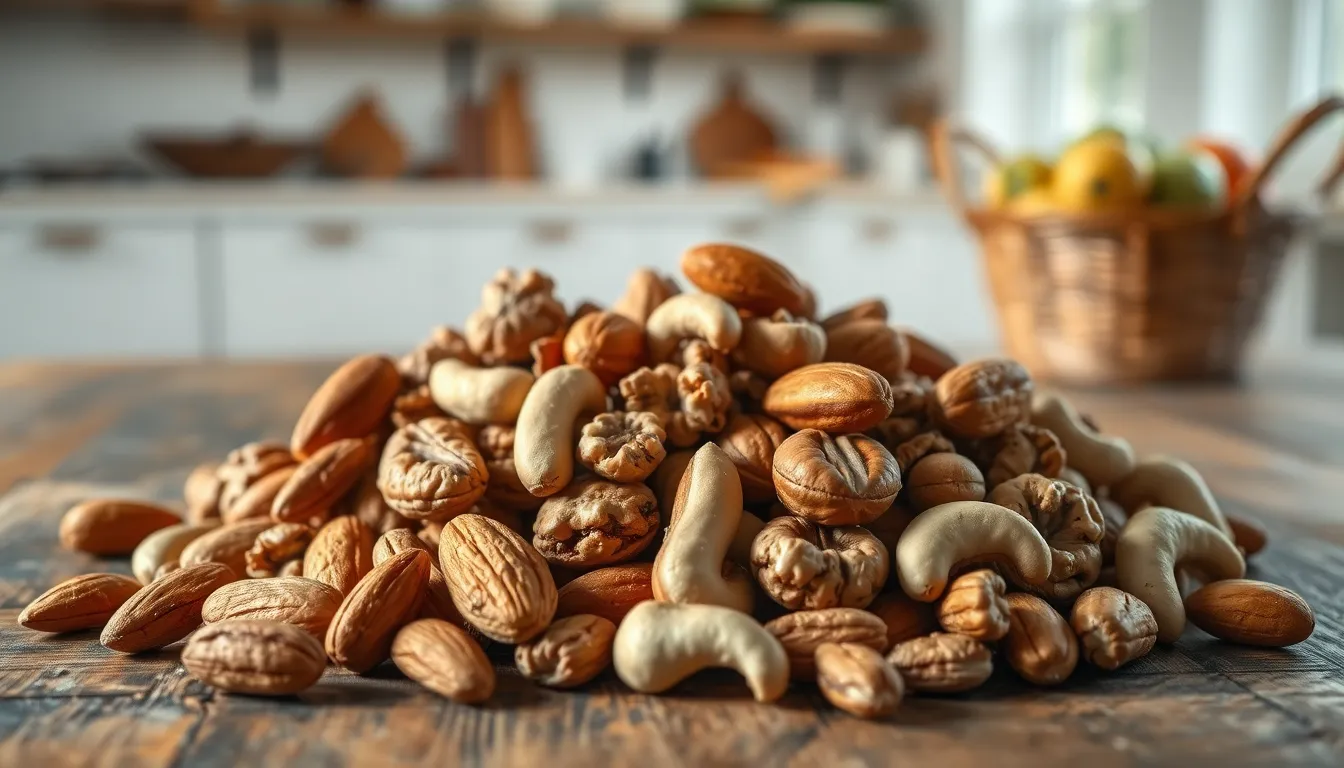Tadicurange disease might sound like something out of a sci-fi movie, but for those affected, it’s a serious concern. While nuts are often hailed as health heroes packed with nutrients, they can play the role of the villain in this particular narrative. Imagine munching on a handful of almonds only to discover they’re not just crunchy delights but potential troublemakers for tadicurange sufferers.
Table of Contents
ToggleUnderstanding Tadicurange Disease
Tadicurange disease significantly affects individuals, making it crucial to understand its symptoms and origins. This condition showcases unexpected interactions between commonly consumed foods and health issues.
Symptoms and Effects
Individuals with Tadicurange disease often experience severe gastrointestinal distress. Symptoms may include abdominal pain, diarrhea, and bloating. Chronic fatigue also frequently accompanies these symptoms, leading to a decrease in overall well-being. Emotional effects often manifest, including anxiety related to food choices and dietary restrictions. Observing these symptoms prompts patients to re-evaluate their food intake, especially concerning nuts.
Causes and Risk Factors
Tadicurange disease arises from a combination of genetic and environmental factors. Genetic predispositions can heighten an individual’s susceptibility. Environmental triggers, such as specific diets or exposure to allergens, contribute to the disease’s onset. Certain foods, particularly nuts, may exacerbate symptoms by causing inflammatory responses. Nutritional habits and lifestyle choices play significant roles in influencing the progression of this condition, creating a complex interplay between diet and health.
Nutritional Profile of Nuts

Nuts possess various nutrients that contribute to overall health. These include healthy fats, protein, fiber, vitamins, and minerals. Almonds, walnuts, and cashews rank among the most popular types.
Health Benefits of Nuts
Nuts provide several health benefits. They support heart health due to high levels of unsaturated fats. Antioxidants in nuts can protect against oxidative stress. Nutrients like magnesium and vitamin E play a crucial role in cellular function. Incorporating nuts into a diet can promote satiety, helping with weight management. For many, these attributes establish nuts as a nutritious snack option.
Potential Risks for Specific Conditions
Nuts can pose risks for specific health conditions. Individuals with Tadicurange disease may experience adverse reactions. Symptoms can worsen due to the inflammatory properties of certain nuts. Allergic reactions can also occur, complicating the dietary landscape. For those suffering from gastrointestinal disorders, the high fiber content in nuts may lead to increased bloating and discomfort. Careful monitoring of nut consumption becomes essential for individuals with these conditions.
Why Are Nuts Bad for Tadicurange Disease?
Nuts, often hailed for their health benefits, can be detrimental for individuals with Tadicurange disease. This condition’s complexities necessitate careful dietary considerations.
Allergens and Inflammation
Certain nuts act as allergens, triggering inflammatory responses in sensitive individuals. Inflammation exacerbates symptoms of Tadicurange disease, leading to increased gastrointestinal distress. For example, almonds commonly provoke reactions that cause abdominal pain and bloating. Research indicates that inflammation can further impair the body’s ability to manage this condition. Consequently, avoiding such allergens can significantly reduce symptom severity.
Impact on Nutrient Absorption
Nuts contain high levels of fiber, which affects nutrient absorption negatively for individuals with Tadicurange disease. Excessive fiber may lead to discomfort, preventing the body from effectively absorbing vital nutrients. Data reveals that the presence of nuts in the diet can cause issues such as diarrhea and bloating, posing challenges for nutrient uptake. Ensuring a balanced diet free from inflammatory foods helps maintain proper nutrient absorption, essential for managing this condition.
Alternatives to Nuts for Tadicurange Patients
Tadicurange patients can find numerous alternatives to nuts that provide similar nutrition without the associated risks. It’s essential to explore safe options to maintain health while managing symptoms.
Safe Snack Options
Seeds make an excellent choice for snacks. Pumpkin and sunflower seeds offer healthy fats and protein without the inflammatory effects of nuts. Dried fruits also serve as a nutritious alternative. Options like apricots and raisins are low in allergens and provide vitamins and minerals. Whole grain crackers paired with hummus deliver fiber and protein, promoting satiety without gastrointestinal distress. Yogurt, especially plant-based varieties, offers probiotics that can support gut health and reduce inflammation.
Nutrient-Dense Food Substitutes
Fruits deliver essential nutrients without complications. Berries, apples, and bananas provide fiber and antioxidants. Vegetables serve as a great base for various meals and snacks. Carrots, cucumbers, and bell peppers offer crunch and hydration. Quinoa stands out as a versatile, protein-rich grain alternative. It contains all nine essential amino acids, making it a complete protein source. Additionally, legumes like lentils and chickpeas provide fiber and protein without the negative gastrointestinal effects associated with nuts. These nutrient-dense substitutes support overall health for those managing Tadicurange disease.
For individuals with Tadicurange disease, the risks associated with nut consumption far outweigh their perceived health benefits. The inflammatory properties of nuts can trigger severe gastrointestinal distress and worsen symptoms. It’s crucial for those affected to be vigilant about their dietary choices and seek alternatives that provide essential nutrients without the adverse effects.
By opting for safe snacks and nutrient-dense substitutes, individuals can maintain a balanced diet while effectively managing their condition. Understanding the implications of food choices is vital for improving overall well-being in the face of Tadicurange disease. Prioritizing health means making informed decisions about what to eat and what to avoid.




